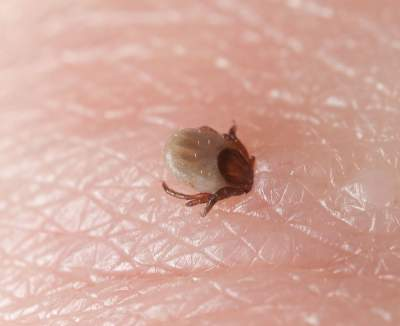 When a tick comes into contact with the skin of a host, it will look for a suitable place to take its blood meal. Usually this is a warm, moist place, such as the groin, armpit, knee or other skin folds, but ticks can be found anywhere on the body. The tick has a rostrum that allows it to penetrate deep into the skin to suck blood and regurgitate saliva.
When a tick comes into contact with the skin of a host, it will look for a suitable place to take its blood meal. Usually this is a warm, moist place, such as the groin, armpit, knee or other skin folds, but ticks can be found anywhere on the body. The tick has a rostrum that allows it to penetrate deep into the skin to suck blood and regurgitate saliva.
Generally, a tick bite is harmless and only causes a temporary local reaction (redness and itching), not to be confused with erythema migrans. But in some cases, the tick may carry pathogens (viruses and bacteria) that can be transmitted to humans through saliva at the time of the bite. In humans, the most common tick-borne disease is Lyme disease.
Three reasons to stay calm:
- Not every bite is infectious.
- An infected tick does not necessarily transmit the disease.
- Lyme disease can be treated effectively with antibiotics